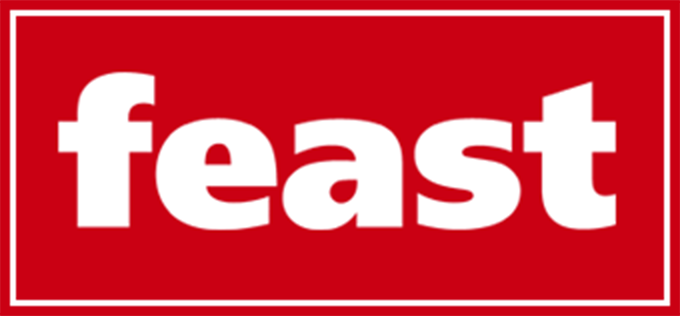In healthcare, the success of machine learning is measured not only in accuracy or throughput but also in trust, compliance, and operational resilience. Investing in this sphere is Veerendra Nath, whose career as a platform and MLOps architect has been defined by building systems that serve patients, providers, and payers with both speed and accountability.
Veerendra’s work spans some of the healthcare industry’s most complex, high-stakes platforms, including NLPaaS (Natural Language Processing as a Service), CDEaaS (Clinical Data Extraction as a Service), and ScriptMed Cloud. All of these services have been captured in media or internal publications. In these roles, he has delivered HIPAA/HITRUST-ready infrastructure capable of processing 50 million+ clinical documents per month, supporting functions like quality scoring, risk adjustment, and pharmacy optimization. His contributions have been as much about enabling teams as about engineering systems.
A key part of his approach is scaling trust along with technology. He has embedded observability, policy-as-code, and telemetry into ML pipelines, ensuring that every deployment is transparent, auditable, and version-controlled. This has allowed organizations to transition from “black box” ML deployments to governed, reproducible systems that earn stakeholder confidence. For Inovalon’s multi-tenant platforms, he architected reusable infrastructure components that enabled ML services to scale across payer and provider clients with plug-and-play provisioning, helping drive multi-million-dollar client expansions.
His mentoring track record is equally notable. Veerendra has guided junior and mid-level engineers in infrastructure as code, CI/CD, and ML deployment workflows. By creating onboarding playbooks, knowledge bases, and reusable templates, he reduced ramp-up time for new engineers by over 40% and improved engineering efficiency by more than 50%. These investments in team capability have minimized reliance on central gatekeeping DevOps teams and enabled self-service infrastructure provisioning across organizations.
The impacts of his work are substantial. Standardized MLOps pipelines cut ML deployment times by 70%, taking cycles from over ten days to fewer than three. Platform uptime improved to 99.95%+, thanks to auto-scaling, health checks, and failover systems tested with chaos engineering. Compliance results speak for themselves: a 100% pass rate on HIPAA, HITRUST, and SOC2 audits, achieved by codifying encryption, IAM policies, and logging directly into Terraform modules. Further, by adopting GitOps and thrift detection models, he enabled fully reproducible, auditable environments through version-controlled IaC rollouts.
These results came with some considerations. One hurdle was bridging the skills gap between ML teams and infrastructure engineers. Many data scientists lacked the expertise to deploy and monitor ML models securely in production. Veerendra addressed this by building user-friendly templates, conducting training sessions, and introducing office hours for cross-functional mentoring, reducing dependency on platform teams and accelerating delivery. Another was embedding compliance without slowing development. His solution: automating governance through policy-as-code, ensuring that security and regulatory standards were met invisibly during deployments. Talking about deployments, to increase version control, observability, and reproducibility, he converted legacy systems into fully containerized, version-controlled pipelines with integrated drift detection, lineage tracking, and real-time monitoring.
Further, he had to scale the system into a multi-tenant infrastructure without compromising security, for which he built tenant-aware provisioning patterns using IaC, dynamic config, telemetry, and integrated per-tenant IAM boundaries and runtime monitoring. Apart from the technical challenges, he also had to contribute to creating a resilient and collaborative engineering culture.
Across projects—from the HCA Healthcare HIN platform spanning 11+ domains, to compliance-hardened pharmacy analytics infrastructure for Cardinal Health and AllianceRx—Veerendra has been a link between engineering feasibility and regulatory assurance. His ability to translate abstract requirements into concrete, codified policies has aligned product, engineering, and compliance teams around shared goals.
From his perspective, trust comes before scale in ML infrastructure. “You don’t earn scalability until you earn trust. Models don’t just need to be right; they need to be provably right in the eyes of auditors, physicians, and regulators,” he says. He also believes that infrastructure as code is now a compliance layer, not just automation, and that platform engineering is a cultural change (teams delivering faster, cleaner results).
Looking at the current trends, Veerendra anticipates the maturation of data mesh architectures into “productized intelligence ecosystems,” where clinical, financial, and operational teams publish governed data products with SLAs and lineage-aware observability. He also sees ML observability becoming a baseline requirement, with real-time monitoring, drift detection, and explainability dashboards embedded into every production deployment. The next wave of MLOps talent, he predicts, will be full-stack platform builders who blend DevOps, ML, compliance, and product thinking into a single discipline.
His suggestion for implementing ML in healthcare is that success in ML is as much about people and culture as it is about infrastructure. Platforms, he says, should be designed in such a way that teams want to use, not just ones they are required to use. Trust should be built in the system from day one, and ROI should be measured by impact. Plus, he suggests building platforms as if every service might someday be used by people outside the entity. This forces quality, modularity, and documentation. In his career, by building both the tools and the trust needed to deliver healthcare ML at scale, Veerendra has positioned himself as a maker and a bridge-builder in one of the most demanding technological arenas.



